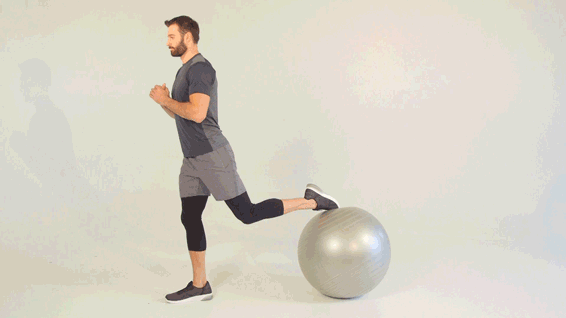This 6-Step Routine Will Get Your Glutes in Gear
Having a weak backside can slow your run and lead to injuries. Here’s how to get your butt moving.
Want to know one of the top reasons runners end up hurt? Look at your backside. Under-utilised gluteal muscles are to blame for a large percentage of injuries, says Nirav Pandya, assistant professor of orthopedic surgery at the University of California San Francisco Medical Centre. And it’s a weakness that often occurs because runners are hyperfocused on building strong quads and hamstrings.
That’s a problem because the work can’t stop at your legs. Your glutes help center your pelvis so that your center of gravity is in line with your ankles, knees, and hips. That puts your body in a more powerful position to generate speed.
Unfortunately, glute weakness often becomes exacerbated when we sit all day; those muscles don’t activate while seated. “Plus, sitting decreases bloodflow, further deconditioning the muscles,” Pandya says. So, before you do anything else, he suggests getting yours more action: Try to get up for five minutes every hour and, twice a day, squeeze your butt for three seconds and release, repeating for eight to 12 reps.
If you’re not sure whether you’re actually activating your glutes, hop on a treadmill that’s positioned in front of a mirror and watch your trunk while you run. If it’s swaying from side to side, it’s likely your butt isn’t in on the action. Try staying centered and you should feel your butt muscles steady your pelvis. That’s the feeling you want.
RELATED: Take the dread out of the mill with these on-demand Treadmill Workouts for Runners.
To make that motion more natural, glute-building exercises are key. Ones that require hip motion or balancing on one leg, like these from John Henwood, running coach at Mile High Run Club in New York City, are best: They fire the glutes to help you stabilise and stay upright. Do one set of 15 to 20 reps, two or three days per week, and say hello to a stronger stride.
1. V-Lift

Lie face down on a stability ball. Position your pelvis in the middle of the ball, hands resting lightly on floor, legs straight, feet shoulder-width apart, legs in a “V” position. Keeping your back flat, squeeze your glutes to lift legs as high as you can. Lower and repeat.
2. Single-Leg Hip Abduction

Place a resistance band around your thighs, a few inches above your knees. Lower into a squat. Keeping torso still, step one foot back at a 45-degree angle. Return to start; quickly switch feet. That’s one rep. Repeat, alternating legs.
3. Monster Walk

Place a resistance band just above your ankles. With your legs far enough apart to keep tension in the band, walk 20 steps to the right (make sure to pick up your back foot, and don’t allow knees to collapse inward). Reverse to the left to return to start.
4. Single-Leg Deadlift

Stand on right foot, knee slightly bent, left foot hovering next to right. With back flat, hinge forward reaching arms straight toward floor and raise left leg straight behind you. Return to start, remaining on one foot. Do reps; switch legs.
5. Hamstring Press

Lie facedown, arms bent so hands are folded in front of you, elbows out. Hold a stability ball between your shins and ankles, legs bent 90 degrees. Squeeze glutes and lift the ball straight up and a few inches off floor. Lower and repeat.
6. Bulgarian Split Squat

Stand with feet hip-width apart, a few feet in front of a stability ball, hands clasped at chest. Place right foot (shoelaces down) on top of ball. With weight in your left foot, lower into a deep lunge. Push into left heel to stand. Do reps; switch sides.
How big is your ball?
Choosing the right size stability ball matters – if you’re using one that’s too big or small, your body positioning could be wonky, making the move less effective, says Henwood. For the V-Lift and Bulgarian Split Squat in this workout, choose a ball that naturally has your legs at a 90-degree angle when you sit on it (your hips should be at the same height as your knees). You may need a smaller option for the Hamstring Press – opt for one that you can comfortably hold between your legs so it stays put for every rep.
READ MORE ON: glutes link in bio strength-training

